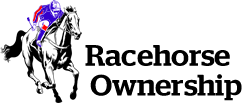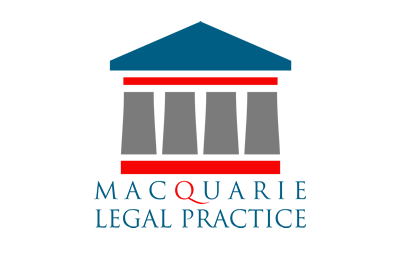Syndicate Regulatory Framework
The managed investment scheme regulatory regime is embedded within the Corporations Act 2001 (the Act).
It is a set of compliance rules for unincorporated arrangements (schemes) involving collective investment established as a result of a person (promoter) raising funds from investors which are then applied and managed by the operator of the scheme on behalf of the members as a group.
The purpose of the rules is to ensure minimum standards of investor protection in relation to the establishment and operation of such schemes.
“managed investment scheme” is defined in section 9. The definition is deliberately wide, and all embracing, and designed to catch virtually all arrangements targeting collective investment. It would, by itself, catch virtually all business models and structures.
The analysis of a scheme to determine whether or not it satisfies the definition of a managed investment scheme requires that consideration be given to:
- all its key elements, including:
- legal structure; and
- the nature of the members [interests] contributions and rights to benefits;
- modus operandi (how it is designed to operate in practice);
- the scheme as being the entire operation [all the activities of the scheme as comprising scheme operations];
- the necessary distinction between:
- the activities [and rights] of the individual members and those of the group; and
- “control in fact” and “merely a right to participate in decision-making”.
The fundamental distinction which underlies the whole of the definition is between:
- schemes where ALL the members have day-to-day control over the operation of the scheme by making ALL the decisions and implementing what is agreed; and
- schemes where the members contributions are either:
- pooled for use as the property of the scheme; or
- not pooled but used in a common enterprise that constitutes the scheme;
with the day-to-day [routine, ordinary, everyday] activities of the scheme being managed or carried out by an operator on behalf of the members as a group, (whether or not they have the right to be consulted or give directions);
the objective assessment in determining day-to-day control being necessarily prospective, viewed from the time when the arrangement is made.
The day-to-day control test is not about ownership or proprietorship, or the legal right to control of the scheme.
- The purpose of the day-to-day control test is to make an important distinction about the nature of the investment each member of the scheme is making.
- If the substance is that ALL the members have day-to-day “control in fact” over the operation of the scheme by making ALL the decisions and implementing what is agreed [actually managing or carrying out the routine, ordinary, everyday activities which comprise the scheme’s operations], then the scheme WILL NOT be a managed investment scheme.
- However, if the substance is that the members contributions are either pooled for use as the property of the scheme, or not pooled but used in a common enterprise that constitutes the scheme, to produce financial benefits, or benefits consisting of rights or interests in property, and the members collectively appoint a person to operate the scheme [with the authority to manage or carry-out the routine, ordinary, everyday activities which comprise the scheme’s operations] on behalf of the group, then the scheme WILL be a managed investment scheme (whether or not they have the right to be consulted or give directions).
- It is a negative test in the sense that for the arrangement to be a managed investment scheme it must be such that the members DO NOT have day-to-day “control in fact” over the operation of the scheme, prospectively viewed from the time when the arrangement is made.
The day-to-day control test includes consideration as to whether a person who provides management services in relation to the property is either:
(a) a mere “agent” who manages the property of each member individually or “investment professional” who simply provides advice to the members on enhancing the value of their own property without exercising control; or
(b) “an operator of the scheme” who manages as a whole the property of the group.
The management activities of the “promoter” or “operator” ARE NOT to be imputed to the members in determining whether the members have day-to-day control over the operation of the scheme.
If the key elements of a scheme satisfy the definition, then its establishment and operation will likely be subject to regulation, EXCEPT if it qualifies as a “private” scheme. To qualify as a “private” scheme it MUST NOT require registration under section 601ED. In other words, it MUST NOT have more than 20 members and the person who established it MUST NOT be in the business of dealing in interests in such schemes.
Horse racing schemes
Horse racing schemes generally [by practical necessity and in order to comply with the Australian Rules of Racing (ARR)] are sufficiently similar in their key elements [structure and modus operandi] to justify the conclusion that any arrangement between 2 or more people (members) to own or lease a racehorse for the purpose of participating in the undertaking of caring for, training and racing it (the horse as a whole) to best advantage for the benefit of the members as a group will, prima facie, satisfy the definition of a managed investment scheme.
The key elements that satisfy the definition are the following:
- the members contributions of money or money’s worth are either:
- pooled for use as the property of the scheme [typical of partnership or unit trust-based “investment” arrangements]; or
- not pooled but used in a common enterprise that constitutes the scheme [typical of co-ownership contract-based “enterprise” arrangements];
to produce financial benefits, or benefits consisting of rights or interests in property; and
- the scheme is operated by a manager and a licensed trainer on behalf of the members as a group, (whether or not they have the right to be consulted or give directions).
The realities of horse racing schemes [typically co-ownership arrangements] as they are designed to operate in practice are:
- each member’s interest in the horse the subject of the scheme [not the scheme itself so far as that is different] is inseparable from the interests of the other members; and
- the right of the members to manage their interests individually is:
- subordinated to the rights of the members collectively and the authority of the manager and the trainer [with actual possession and control of the horse as a whole] to operate the scheme on behalf of the group; and
- limited to voting on those matters specified in the relevant Owners Agreement or Training Agreement as requiring the members’ approval (by the requisite majority).
The manager and the trainer are clearly “operators” of the scheme who manage or carry out activities in relation to the horse as a whole on behalf of the members as a group. Neither is a mere “agent” who manages the property of each member individually or “investment professional” who simply provides advice to the members on enhancing the value of their own property without exercsing control.
Accordingly, day-to-day “control in fact” over the operation of the scheme devolves to the manager and the trainer, being the people who, as the operators of the scheme, actually perform “…the acts which constitute the management of or the carrying out of the activities which constitute the scheme“.
Conversely, the members DO NOT have day-to-day control over the operation of the scheme, prospectively viewed from the time when the arrangement is made. Practical necessity and the ARR require that the members:
- appoint a manager and a licensed trainer and delegate to them the authority to operate the scheme on behalf of the group; and
- surrender day-to-day control over their interests to the manager and the trainer so that those people can manage the members’ interests in common [the horse as a whole] for the benefit of the group, (whether or not they have the right to be consulted or give directions.
However, a scheme may not possess these characteristics alone. The fact that it may also possess other characteristics such as terms which provide for the members to:
- pay their contributions towards operating expenses directly* to the relevant service providers [proportionate direct invoicing and payment of fees and expenses];
- be paid their distributions of any income (prize money) directly* via the stakes payment system; [*an alternative to the manager administering these arrangements via a designated scheme bank account] or
- participate in decision-making in accordance with the procedure (and requsitie majority) set out in the applicable Owners Agreement or Training Agreement;
does not take it outside of the scope of the definition.
The case law and the evidence clearly support the conclusion that that the characteristics of a managed investment scheme are inherent in horse racing schemes as they are both designed to operate in practice and required to operate by the ARR. Consequently, there is no apparent basis upon which any person, including a licensed trainer, who is in the business of establishing or operating such schemes, could successfully argue [in any legal forum] that the resultant schemes are outside of the scope of the definition. Any such argument would likely be an artificial construction of the documents to avoid the legislative intention of the statutory provisions.
The need for ALL the members to exercise day-to-day control over the operation of the scheme by making ALL the decisions and implementing what is agreed would be impractical and a significant impediment to the operation of such schemes which is only overcome by the members:
- appointing a manager and a licensed trainer [with actual possession of the horse as a whole]; and
- delegating to them the authority to operate certain aspects of the scheme on behalf of the group.
Full Document (PDF)
First published in December 2008. Last revised 25 May 2022 to include reference to the May 2022 Supreme Court of NSW decision in Stewart v Spicer Thoroughbreds Pty Ltd. Note: this case is currently subject to a Notice of Intention to Appeal by the First Defendant (Spicer Thoroughbreds) which must be filed by 20 August 2022.
Summary Paper (PDF)
First published in February 2019. Last revised 25 May 2022 to include reference to the May 2022 Supreme Court of NSW decision in Stewart v Spicer Thoroughbreds Pty Ltd.


